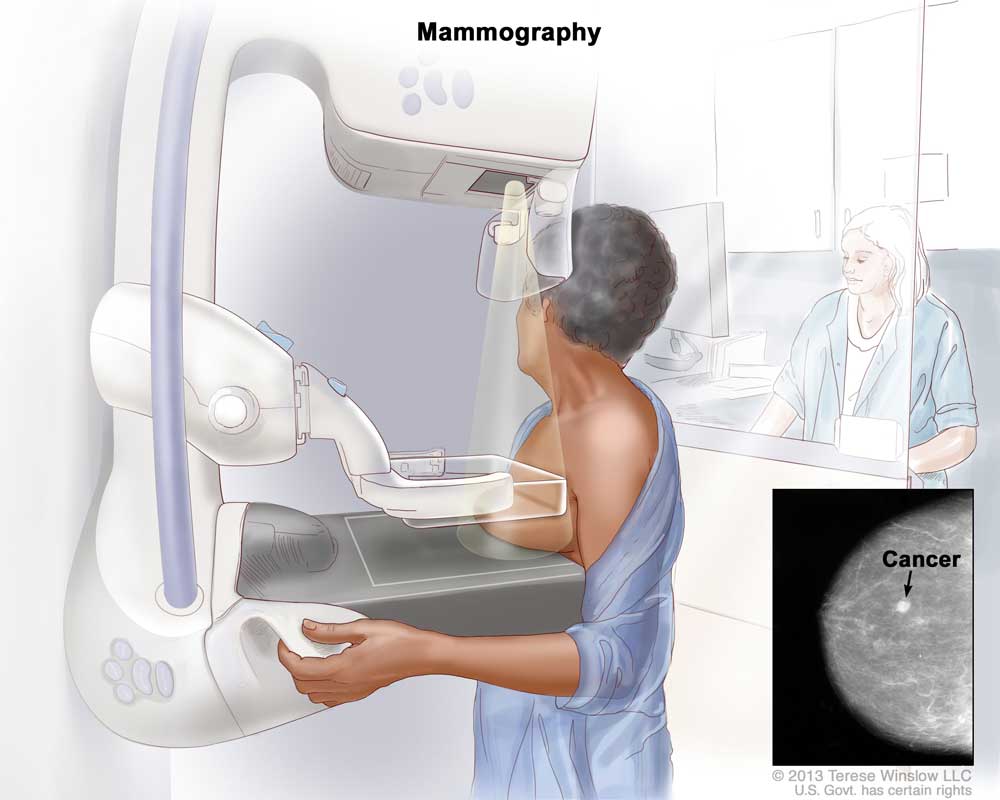Watch what our experts have to say about breast cancer screening for women in their 40s.
What is breast cancer screening? When should you start? What tests should you have? How often do you need to be screened? To answer your questions about when and how often you might need to be screened for breast cancer, our breast cancer experts have developed guidelines based on our experience treating patients at Memorial Sloan Kettering. We recommend one set of guidelines for women at average risk and another for women at above-average risk.
Simply put, breast cancer screening refers to the regular breast exams recommended by doctors to detect breast cancer before symptoms develop. The purpose of breast screening is to find breast cancer at its earliest, most treatable stages.Studies have shown that regular annual mammography screening of women with no symptoms of breast cancer has lowered the number of women who die from the disease by about 30 percent.
The guidelines below may differ from the ones put forward by other organizations. Read more about why screening guidelines for breast cancer may differ. We have based ours on the approach shown to save the highest possible number of lives.
Screening Guidelines for Women at Average Breast Cancer Risk
MSK doctors recommend the following for women at average risk* of breast cancer:
- Women between the ages of 25 and 40 should have anannual clinical breast examination.
- Women 40 and older should have an annual mammogram in addition to anannual clinical breast examination.
- Ultrasound may be recommended for women with dense breast tissue.
- All women should consider performing a monthly self breast exam beginning at age 20 and become familiar with their breasts so they are better able to notice changes.
* You are at average risk if you have:
- no symptoms of breast cancer
- no history of invasive breast cancer (breast cancer that has spread beyond the milk ducts)
- no history of ductal or lobular carcinoma in situ (abnormal cells that are confined to the milk duct, or lobule)
- no history of atypia (atypical hyperplasia, a form of benign breast disease)
- no family history of breast cancer in a first-degree relative (parent, sibling, or child)
- no suggestion or evidence of a hereditary syndrome such as a BRCA mutation (evidence would be multiple first- and/or second-degree relatives with breast cancer or ovarian cancer)
- no history of mantle radiation (a radiation therapy used to treat Hodgkin’s disease and some other conditions)
Screening Guidelines for Women at Above-Average Breast Cancer Risk
MSK’s breast cancer experts have developed separate guidelines for women who have a higher-than-average breast cancer risk for the following reasons:
- family history of breast cancer in a first-degree relative (parent, sibling, or child)
- history of atypical hyperplasia (a form of benign breast disease)
- history of lobular carcinoma in situ (abnormal cells that are confined to the milk duct, or lobule)
- history of mantle radiation (a radiation therapy used to treat Hodgkin’s disease and some other conditions) before the age of 32
- genetic predisposition for breast cancer (for example, women with a BRCA mutation)
If you have an above-average risk of breast cancer for the reasons listed above, MSK doctors recommend the guidelines below.
For women with a family history of breast cancer:
- a clinical breast exam every six months starting no later than ten years before the age of the earliest diagnosis in the family (but not earlier than age 25 and not later than age 40)
- an annual mammogram starting no later than ten years before the age of the earliest diagnosis in the family (but not earlier than age 25 and not later than age 40)
- possible supplemental imaging (for example, with ultrasound) for women with dense breast tissue
- possibly alternating between a breast MRI and a mammogram every six months, as determined by your physician
For women who have ever been diagnosed with atypical hyperplasia or lobular carcinoma in situ:
- a clinical breast exam every six months to 12 months beginning at the time of your diagnosis
- an annual mammogram beginning at the time of your diagnosis
- possible supplemental imaging (for example, with ultrasound) for women with dense breast tissue
For women with a genetic predisposition to breast cancer:
- a clinical breast exam every six months
- an annual mammogram starting at age 25
- possible annual breast MRI
For women who have had mantle radiation:
- a clinical breast exam every six months beginning at the time of your radiation treatment
- an annual mammogram starting eight years after your radiation treatment
- possible annual breast MRI
All women at above-average breast cancer risk should speak with their doctor about additional screening tests, perform a monthly self breast exam, and become familiar with their breasts so they are better able to notice changes.
MSK offers a comprehensive program for women at increased breast cancer risk, including regular breast exams and imaging. It allows any developments to be identified and dealt with right away.
Learn more about all our cancer screening services.
